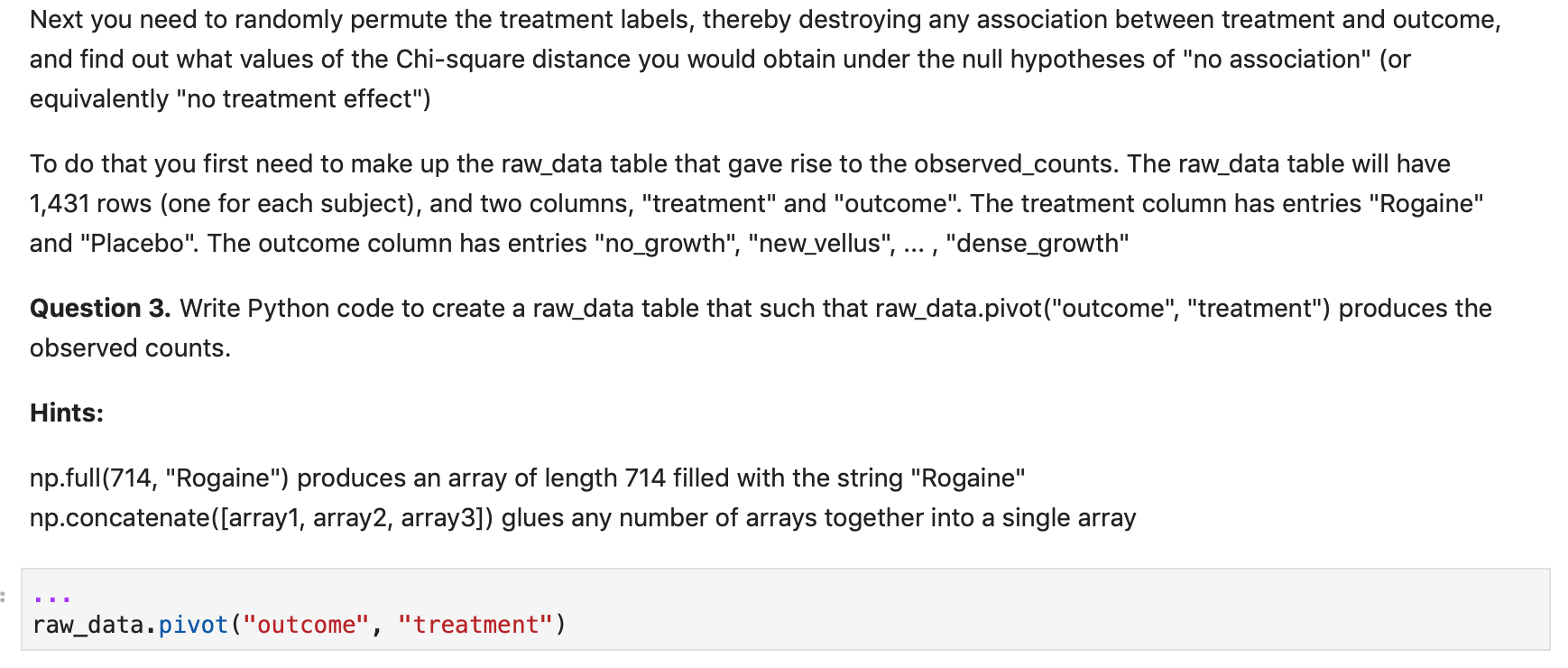Answered step by step
Verified Expert Solution
Question
1 Approved Answer
Write Python code to create a raw_data table that such that raw_data.pivot(outcome, treatment) produces the observed counts. Hints: np.full(714, Rogaine) produces an array of length
Write Python code to create a raw_data table that such that raw_data.pivot("outcome", "treatment") produces the observed counts. Hints: np.full(714, "Rogaine") produces an array of length 714 filled with the string "Rogaine" np.concatenate([array1, array2, array3]) glues any number of arrays together into a single array

Step by Step Solution
There are 3 Steps involved in it
Step: 1

Get Instant Access to Expert-Tailored Solutions
See step-by-step solutions with expert insights and AI powered tools for academic success
Step: 2

Step: 3

Ace Your Homework with AI
Get the answers you need in no time with our AI-driven, step-by-step assistance
Get Started


